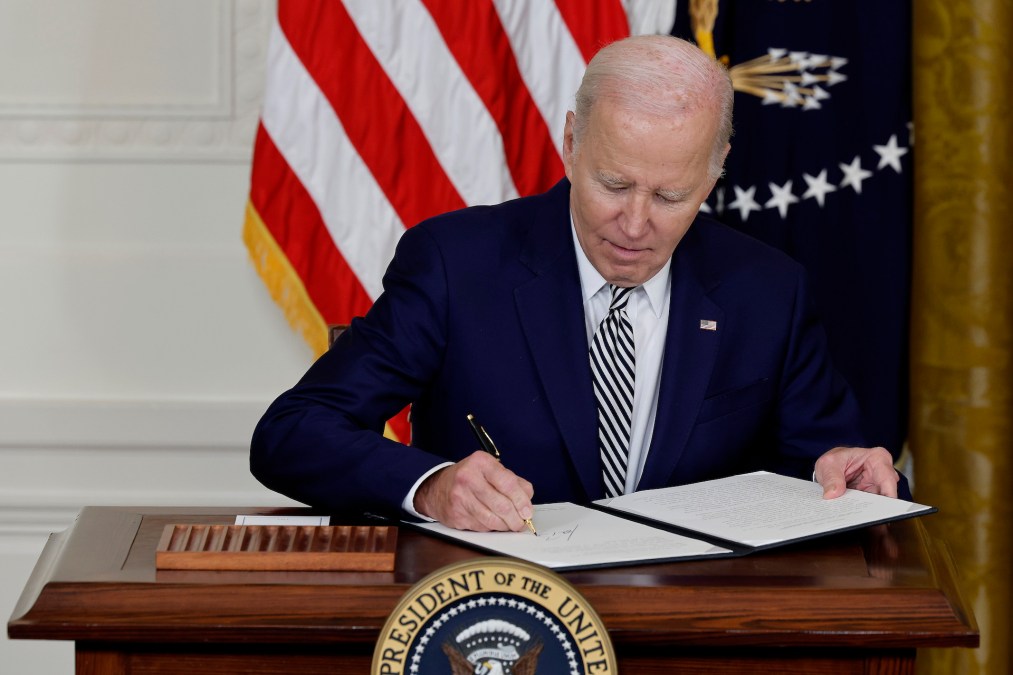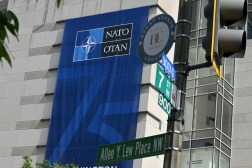Biden tasks Pentagon to carry out new AI pilot for cyber defense

President Biden on Monday signed an executive order that, among other things, would require the Department of Defense to conduct a pilot aimed at finding ways to use AI to protect national security networks.
The EO on the “Safe, Secure, and Trustworthy Development and Use of Artificial Intelligence,” gives the Pentagon 180 days to conduct the pilot.
The secretary of defense and the secretary of homeland security “shall, consistent with applicable law, each develop plans for, conduct, and complete an operational pilot project to identify, develop, test, evaluate, and deploy AI capabilities, such as large-language models, to aid in the discovery and remediation of vulnerabilities in critical United States Government software, systems, and networks,” the directive states.
Within the next 270 days, the two secretaries must each deliver a report to the White House on the results of actions taken “pursuant to the plans and operational pilot projects … including a description of any vulnerabilities found and fixed through the development and deployment of AI capabilities and any lessons learned on how to identify, develop, test, evaluate, and deploy AI capabilities effectively for cyber defense,” according to the EO.
The Defense Department has already set up a group known as Task Force Lima to look at potential use cases for generative AI tools such as large language models. More broadly, the Pentagon’s Chief Digital and AI Office is focused on helping deploy artificial intelligence capabilities across the department. A number of other DOD agencies and offices are also involved in artificial intelligence and cybersecurity efforts, and it wasn’t immediately clear which DOD organizations will execute the pilot that Biden directed.
Biden highlighted cybersecurity concerns during remarks at the White House on Monday before he signed the order.
“In the wrong hands, AI can make it easier for hackers to exploit vulnerabilities in the software that makes our society run. That’s why I’m directing the Department of Defense and Department of Homeland Security — both of them — to develop game-changing cyber protections that will make our computers and our critical infrastructure more secure than it is today,” he said.
Additionally, in the next six months the Pentagon chief must also deliver a report about ways to fix “gaps in AI talent” related to national defense, including recommendations for addressing challenges in the DOD’s ability to hire certain noncitizens; streamlining processes for certain noncitizens to access classified information through “Limited Access Authorization” at department labs; the appropriate use of enlistment authority under 10 U.S.C. 504(b)(2) for experts in artificial intelligence and other critical and emerging technologies; and ways that DOD and DHS can “enhance the use of appropriate authorities for the retention of certain noncitizens of vital importance to national security,” according to the directive.
Meanwhile, White House officials have been tasked with overseeing the development of a national security memorandum that will provide guidance to the Pentagon, intelligence community and other relevant agencies on the continued adoption of AI capabilities for national security missions, including as it relates to AI assurance and risk-management practices for use cases that “may affect the rights or safety of United States persons and, in appropriate contexts, non-United States persons,” per the EO.
Notably, the memo will also include directives to address the potential adversarial use of AI systems “in ways that threaten the capabilities or objectives of the Department of Defense or the Intelligence Community, or that otherwise pose risks to the security of the United States or its allies and partners.”
That document is expected to be delivered to the president within the next 270 days.






